Or at least trying to.
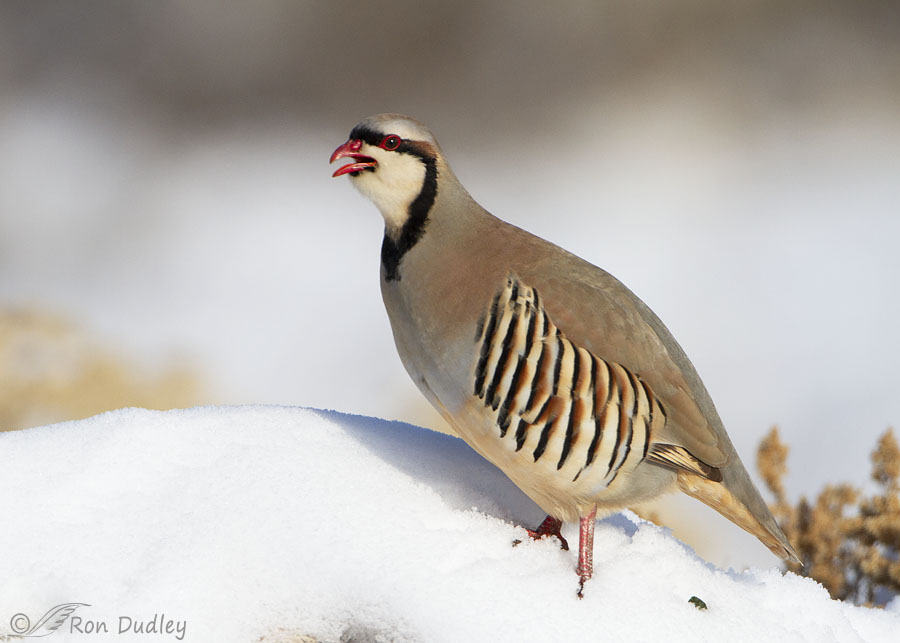
1/3200, f/6.3, ISO 500, Canon 7D, Canon EF 500mm f/4L IS II USM + EF 1.4 III Extender, not baited, set up or called in
In late December nine years ago I spent quite a bit of time photographing this Chukar in deep snow on Antelope Island. I was close to ‘him’ but for most of the time I was with him he was calm and accepting of my presence. Occasionally he would call, as Chukars are prone to do, but for most of the time he was just standing there near the top of the small, snow covered hill.
Yup, he pooped in the snow while he was there.
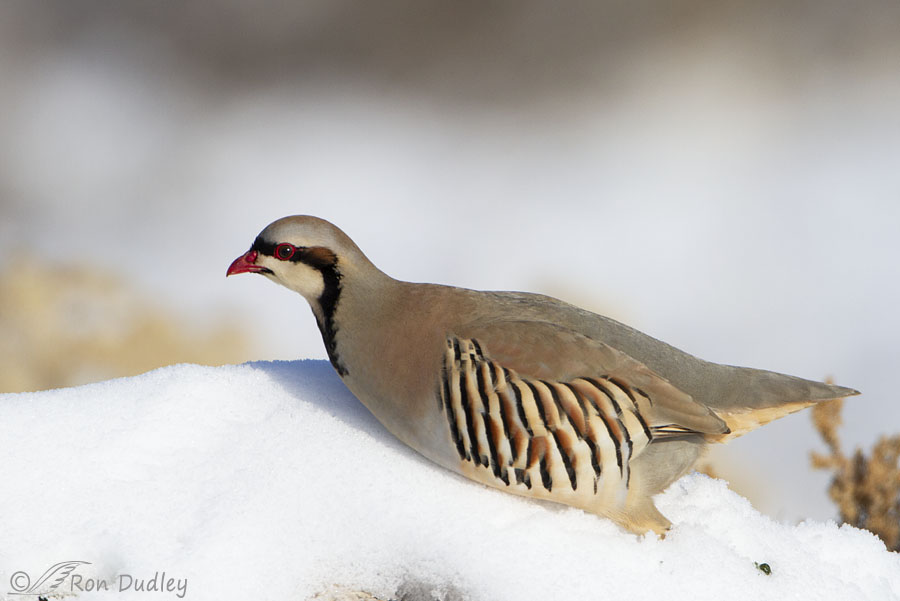
1/2500, f/6.3, ISO 500, Canon 7D, Canon EF 500mm f/4L IS II USM + EF 1.4 III Extender, not baited, set up or called in
Eventually he began to chug through the deep snow toward the top of the hill. At first he wasn’t in much of a hurry so…
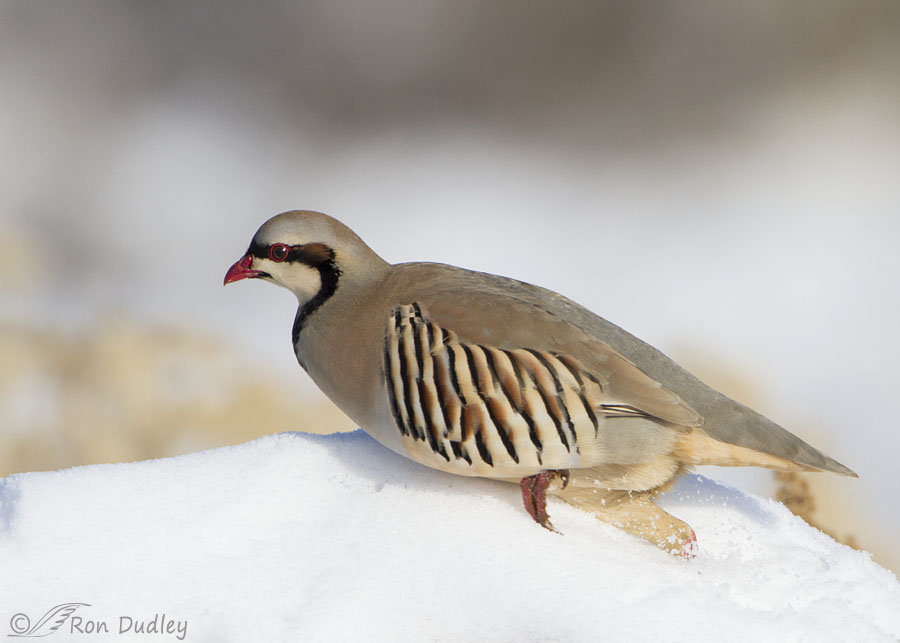
1/2500, f/6.3, ISO 500, Canon 7D, Canon EF 500mm f/4L IS II USM + EF 1.4 III Extender, not baited, set up or called in
he was fairly easy to keep in the frame.
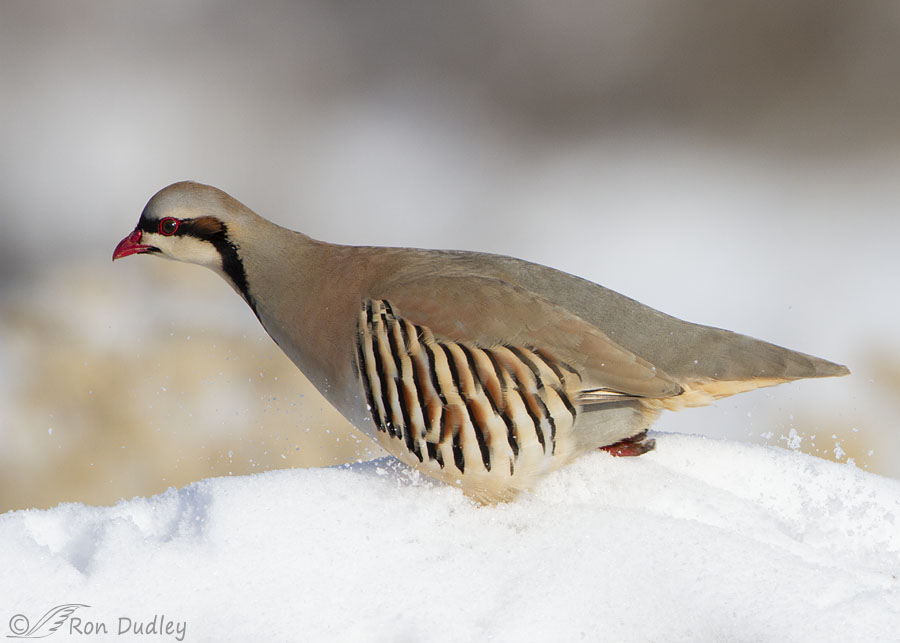
1/2500, f/6.3, ISO 500, Canon 7D, Canon EF 500mm f/4L IS II USM + EF 1.4 III Extender, not baited, set up or called in
But when he crested the hill he began to run…
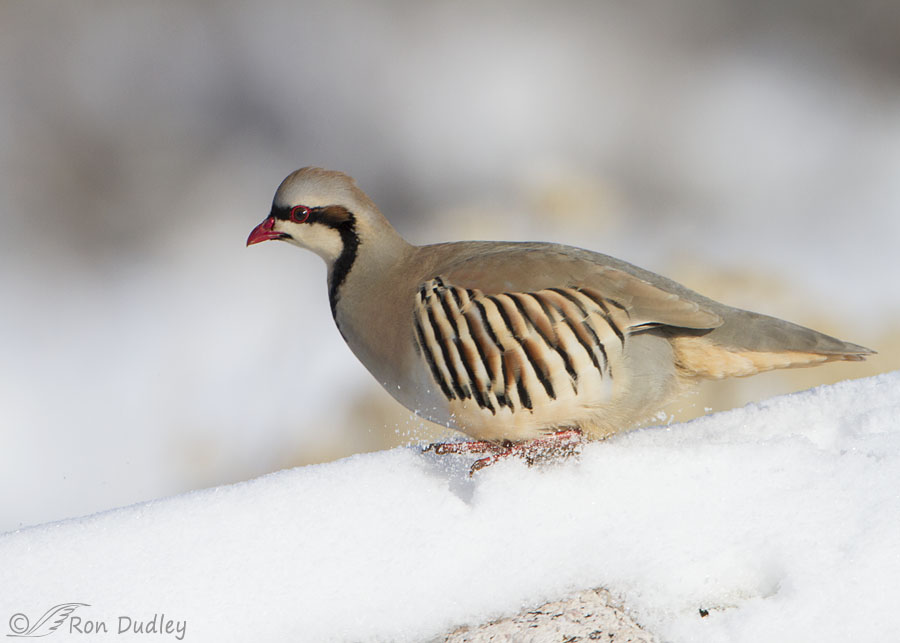
1/2500, f/6.3, ISO 500, Canon 7D, Canon EF 500mm f/4L IS II USM + EF 1.4 III Extender, not baited, set up or called in
or at least try to through all that snow. At this point I either lost focus on him or cut off body parts, or both, for four shots in the burst so I deleted those photos. I think what happened is he suddenly put on the brakes for about a half second so my still-moving lens probably cut off his tail.
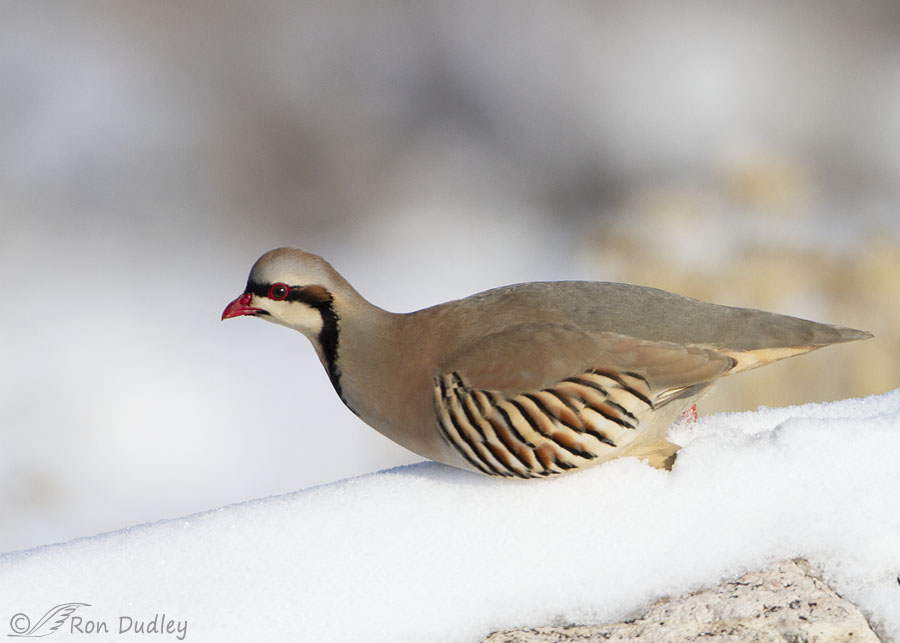
1/3200, f/6.3, ISO 500, Canon 7D, Canon EF 500mm f/4L IS II USM + EF 1.4 III Extender, not baited, set up or called in
But then I got him completely in frame again just before he…
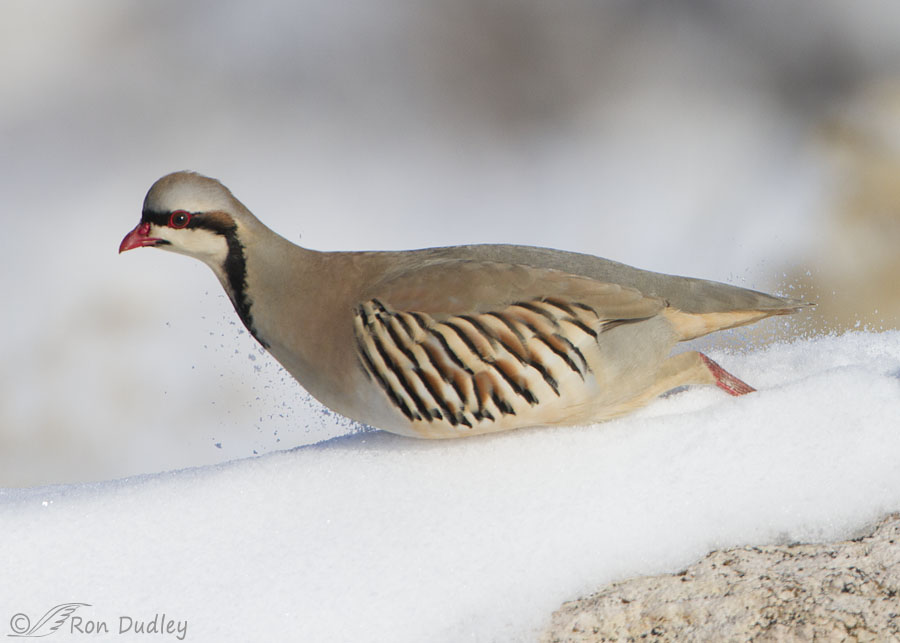
1/3200, f/6.3, ISO 500, Canon 7D, Canon EF 500mm f/4L IS II USM + EF 1.4 III Extender, not baited, set up or called in
turned on the afterburners. At this point he was really striding out as he sailed downhill with the aid of gravity. For this last shot in the series he was too close to the left frame edge for me to get a composition I like but I do like his striding, streamlined posture and the snow flying through the air directly in front of and behind him.
I’ve said it before, I really miss the Chukars on Antelope Island. I can’t remember the last time I photographed one there.
Ron


Such focused critters in striking get-ups! I once had two males, someone’s escaped birds, in care at the same time. They got along OK until the day when they decided to fight each other. Fascinating to watch their intense stylized posturing. They circled each other, always counter-clockwise, just as if they had built in rules to work out dominance without actually killing each other. Neither lost a feather, yet finally settled the issue.
Interesting, MIkal. I’ve only seen them fighting a couple of times but one of the fights was pretty intense.
I had never heard of the Chukar until I started following your blog. This male is so very beautiful. An amazing contrast in colors so much that the bird seems to have a contrast in textures. It saddens me deeply that Antelope Island is being developed and exploited like so many other beautiful wild places.
Thank you, Melanie. By “developed” I just mean too many campgrounds (a huge new one was just built – they already had two big ones), too much utility work all over the north end of the island and the causeway to support all the campgrounds and buildings – stuff like that. They aren’t building new houses on the island. At least not yet.
When it comes to the gamebird Chukar the saying goes. The first time you pursue them is for fun the 2nd time is for revenge.
Yes, I’ve heard that saying, Steven. More than once. And it’s always said with deep sincerity!
super series Ron! Thanks for sharing!
Charlotte Norton
Thanks, Charlotte.
A chugging Chukar! His body posture looks like he’s really working to slog through all that snow.
I’m so sorry you’re not able to find them (and so many other animals) now. “Progress.”


Yes, he was working pretty hard there for a few moments. Thanks, Marty.
Beautiful series of photos! Love that bird… I’ve got to get myself out West sometime soon.
Thank you, Joanne.
“Aah, relief” is the message from the first photo, in preparation for scaling the summit before him. In the last photo the little flourish of snow dust before him is a nice touch.
It would be interesting to know why the Chukar population is declining on the island. One usually reads about invasive species doing all to well.
Lyle, lots of things are probably contributing to their decline on the island including the drought, increasing temps and too much development and too many people on the island, among other things.
Yes, they are a sweet fat cute birds. Don’t see them very often around my area but once in a while in the mountains. On the drier side in the Big Horn Basin area.
That sounds like exactly the kind of habitat they prefer, Trudy – usually on fairly steep slopes, which is another reason they’re so difficult for hunters to bag.
As you might remember having been introduced by you to Chukars I love them. And mourn with and for you that you now rarely see them.. We are back to the progress that isn’t thing again aren’t we?
Yup, the “progress that isn’t” thing. And I hate it.
I have never seen a Chukars, but if I ever did it looks like it sure would be fun to see them running through the snow. Excellent photos.
Thanks, Everett. I’m sure you’d enjoy them a lot.
Such a beautiful bird—so much loss of beauty. Still, I heard ( in my loopy
morning head ) the theme from “Chariots of Fire” as through your photos
I watched him struggle through the snow– must have been his beautiful
fiery beak and eyes that triggered the memory…….
“so much loss of beauty”
Kris, there’s still a few Chukars on the island but very few and they mostly stay in areas that are inaccessible to people
Very handsome bird and crystal clear sharp shots of him with an amusing little story of his struggle. Catching them in flight must be more than difficult. I know that our feral pheasants always take me by surprise when they decide to fly. Just yesterday one left the cover of the large wooded traffic island in front of our house as usual to come for breakfast but instead of scampering across the road as usual he launched himself up and over the road and surprisingly up and over my roof even though I had seen no obvious threat nearby. Needless to say I was unprepared with no camera in hand. I guess it is these little surprises from our birdy friends which makes watching them so addictive.
“Catching them in flight must be more than difficult”
That’s for sure, Granny Pat. I think the only time I’ve been able to do it is when they mostly ‘jump’ down from an elevated perch.
Nice shot to remember what the island used to be like. This year I’ve only spotted one pair of chuckers, one coyote, and zero rabbits. All of which
were easy to find years ago. Birds of prey which were plentiful are also a thing of the past. Water had to be hillicoptered to the top of the mountain to keep the bighorn sheep from dying of thirst. The only thing easy to find are PEOPLE. I sure miss the days of the past. You and Mia included.
Sterling, you summarized my recent experiences on the island perfectly. And I HATE all the development they’ve been doing on the island. It’s all so very sad.
Just plain sad!
Fun series, Ron. Interesting he would “run” rather than fly – didn’t even use his wings for an assist!
Interesting he would “run” rather than fly – didn’t even use his wings for an assist!  They are SUCH pretty birds – sad you aren’t seeing them any more.
They are SUCH pretty birds – sad you aren’t seeing them any more.
Judy, Chukars seldom fly. To say they rarely fly would be taking it too far but they sure don’t fly very often. Instead they just run and hide in the vegetation. That’s part of the reason that hunters find them to be such a challenging quarry.
Great shots!
Thanks, Dick.